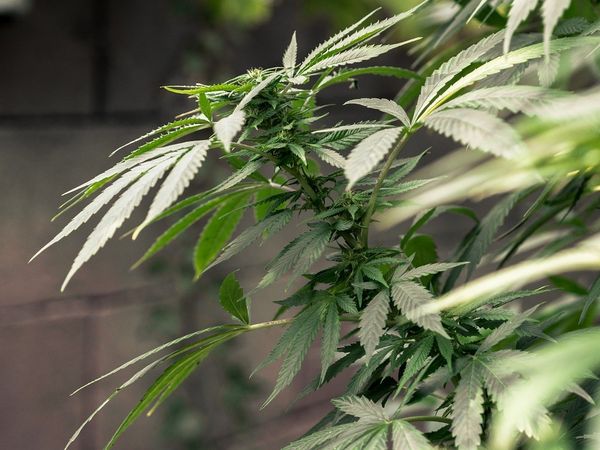- Just like humans, cannabis plants need healthy and balanced nutrition to grow.
- The presence of proper levels of each nutrient is essential for their development, but newcomers to the world of growing at home may not understand all the variables involved.
- If you're one of them, don't worry, in this article we'll tell you everything you need to know so that plant nutrition doesn't give you headaches.

The plants' diet is one of the fundamental factors in any cannabis crop. Giving your marijuana all the nutrients it needs (in the right quantities and at the right time) is vital for it to withstand diseases and pests, and ensure a happy ending come harvest time. It is, therefore, essential for the most inexperienced growers to learn about this matter and lose their fear of making mistakes. With this small guide you'll be able to overcome many of the challenges you might face.
How exactly is a plant nourished?
Plants draw hydrogen, carbon and oxygen from the water and the atmosphere, but nutrients must be obtained through the substrate and, to a lesser extent, from leaves. Like many plants, cannabis planted in a substrate cannot develop properly without certain chemical elements furnished by the soil.
We talk about fertility to refer to the ability or capacity of the soil to meet the plant's needs. Thus, when the soil is not of high enough quality to meet this demand, the solution involves choosing an external complement, better known as fertilisation or fertilisers. Said substances cannot be taken lightly, as they must meet the needs of the cannabis and match the characteristics of the substrate or soil.
What kind of nutrient should I choose?
Fertilisers for cannabis can be found in different formats and sizes, but it is most common to use liquids or solids. We can distinguish between complete nutrients, organic stimulators, PK boosters and organic fertilisers. Complete nutrients are those that simultaneously feature NPK (nitrogen, phosphorus and potassium) macroelements, secondary elements (such as calcium or magnesium) and all the trace elements (iron or zinc) in appropriate proportions. This type of nutrient can be applied during two different stages of cannabis cultivation, such as growth and flowering, but there are also some designed to feed our little ones throughout their cultivation.
What is the proper NPK ratio?
When it comes to choosing nutrients, it is important for them to follow the NPK formula; that is, contain nitrogen (N), phosphorous (P) and potassium (K). Depending on the proportions of each element, it will be more or less suitable for a given growth phase. For example, if you have an NPK fertiliser followed by 4/2/3, that means it contains more nitrogen, so it is especially useful for the growth stage. If, on the other hand, the numbers that appear are 2/3/4, this means that it contains more phosphorous and potassium than nitrogen, so it will be a good option during the flowering phase.
In this regard it is important to understand that the numbers refer to a ratio and not an exact percentage, so the dissolution of the nutrients may vary depending on the brand. Thus, it is important that you check the product's specifications before acquiring it.

What are flowering stimulators?
You can also use a specific nutrient to fatten buds. These are PK boosters, a fertiliser exclusively containing phosphorous (P) and potassium (K), the two most important elements for flowering. It cannot, however, be used as a perfect nutrient, but rather as a complement for a short time period (approximately two to three weeks during the final flowering phase).
Why is calcium so important?
Within the complete nutrients, it is also important to verify the amount of calcium provided by the fertiliser. This element plays an essential role in ensuring a successful harvest, as it is involved in the absorption of other nutrients, maintains cell structure, and participates in photosynthesis, such that a lack or surfeit of it can mean catastrophic consequences for your crops.
So, if you have noticed small brown or yellowish spots scattered over the surface of your leaves, or if your youngest plants are curved or oddly shaped, they may be sounding an alarm: they need more calcium. Conversely, when the concentration is too high they will suffer from chlorosis, evidenced by brown spots on the leaves. Thus, to maintain a balance you should first make sure that the substrate's pH is between 6.2 and 7 at the bottom.
If the calcium contribution by some nutrients is insufficient, it is a good idea to use a supplement, and add magnesium to your irrigation water, though taking care not to do so during the flowering phase. Another option is to use a calcium nitrate fertiliser (with the same caveat), or purchase one containing only calcium.
Are organic products more effective?
Setting aside complete nutrients and boosters, you can also use organic products. These materials include organic fertilisers designed to enrich the soil, as well as organic stimulants, made up of vitamins, algae extracts and amino acids. The latter are not characterised by the quantity of nutrients they contain, but rather their improvement of the plant's metabolism and its tendency to assimilate nutrients. For example, a root stimulator supports the plant's root development, while a flowering booster favours strong bud development. In any case, we cannot forget that these are just complements.

When do I start with nutrition?
The use and dosage of nutrients will depend on the plant's life stage. Generally smaller plants need a reduced dose, while larger ones require a greater amount of nutrients. If you decide to buy a liquid nutrient or PK booster, you must add them to your irrigation one third of the time. Organic stimulators, meanwhile, typically contain little or even no NPK elements, so they can be included in each irrigation, and some directly on the leaves, particularly during the flowering stage.
What is the recommended dosage?
Regarding the doses, it is advisable to always start with low ones and gradually increase it every week up to the maximum recommended by the manufacturer. Subsequently, the amount should be reduced gradually, ultimately completely ceasing use of the product. If you find it easier you can also design a weekly calendar to note down the doses the strain needs during each irrigation, so you don´t get mixed up. However, the most important thing is to give your plants the appropriate attention and keep an eye on them so they do not suffer from a shortage or glut of nutrients, which can spoil your harvest.
Can different lines of fertilisers be mixed?
Yes, though it is best not to mix brands of fertilisers and additives for your cannabis crop, because the products of a given line are designed to work together. That is, you shouldn´t mix a product line from one company for flowering with another from a different brand for root stimulation, as this may pose a major risk by duplicating nutrients, or they may feature incompatibilities. When in doubt, consult with the staff behind each catalogue.
Where do I keep fertilisers during cultivation?
Generally, organic products should be kept in the refrigerator once opened, so that they will not spoil, and can be useful for a few months. Mineral products, meanwhile, can be stored at room temperature for several years, but try to keep them out of direct light. If you notice that the product's smell or texture has changed, beware! It is likely to be toxic and to have lost its nutritional efficiency, so it best to throw it away.
Do I need to wash the roots?
When the soil in a pot has more elements than necessary, the level of pH (acidity indicator) and mineral salts is thrown off and the roots do not absorb nutrients properly. To remedy this, it is a good idea to wash the roots so that the water carries off all the components, leaving a clean and healthy substrate.
Washing involves pouring a large quantity of water on the plant so that it filters through and cleans the soil. When watering, triple the volume of the receptacle: that is, if you are growing in an 11-litre pot, use at least 33 litres of water. The fertilisers and chemicals that absorb the roots can also cause buds to have a strange taste, or their smoke to sting the throat. A good washing of roots averts these unpleasant consequences for the smoker.
With these tips you can start to nourish your plants and enjoy a bountiful harvest. Remember that the most important thing is to strike a balance and keep a close eye on them. And don´t forget to shake the bottle before using it!



Comments from our readers
Read comments in other languages:
Did you like this post?
Your opinion about our seeds is very important to us and can help other users a lot (your email address won't be made public).